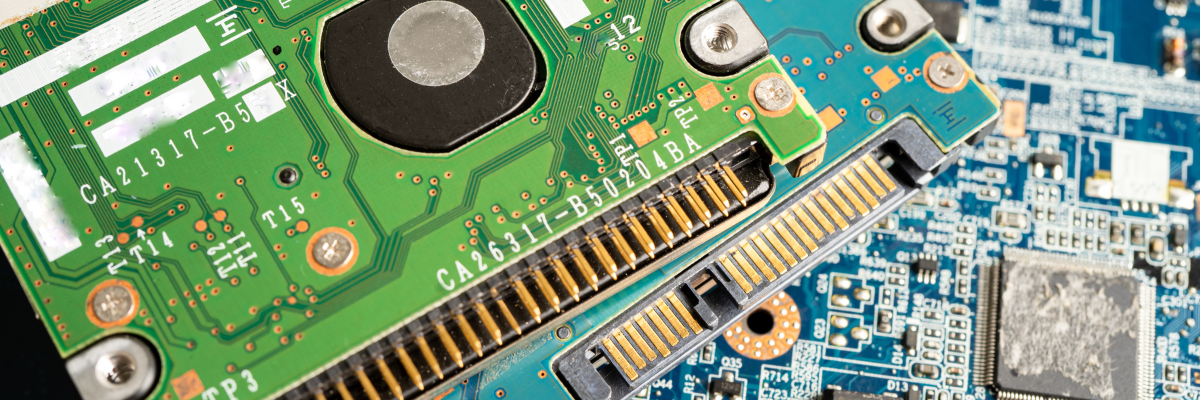The Printed circuit board (PCB) host several common passive and active components that perform complex functionalities. The passive components and their importance and selection tips were discussed in the previous blog post in this series. This post focuses on active components that serve as the heart of the electronic hearts.
Overview of Common Active Circuit Board Components
Active circuit board components are electronic devices that require a power source to function and actively control the flow of electrical signals within a circuit. These components can amplify, switch, or modify electronic signals, and they play a crucial role in the operation of electronic devices.
Types of Active Circuit Board Components Used in the PCB
Let us take a look at some of the active components in detail and the role they play in a circuit board.
- Transistors: Transistors are semiconductor devices that act as amplifiers or switches in electronic circuits. They come in several types, including bipolar junction transistors (BJTs) and field-effect transistors (FETs), each with its unique characteristics and applications. Transistors are fundamental to the operation of digital and analogue circuits, enabling signal amplification, modulation, and switching operations. They are integral components in everything from microprocessors to audio amplifiers. Field-effect transistors (FETs) and bipolar junction transistors (BJTs) are a few popular types of transistors used in the PCBs.
- Diodes: Diodes are semiconductor devices that allow current to flow in one direction while blocking it in the opposite direction. They serve as crucial components in rectification circuits, converting alternating current (AC) to direct current (DC). Diodes also find applications in signal modulation, voltage regulation, and protection against reverse polarity. Popular types of diodes include the silicon diode, light-emitting diodes (LEDs), and Zener diodes used for voltage regulation.
- Integrated Circuits (ICs): Integrated circuits, or ICs, are compact packages containing numerous electronic components such as transistors, resistors, and capacitors fabricated onto a single semiconductor substrate. ICs revolutionized the electronics industry by miniaturizing circuits, enhancing performance, and reducing power consumption.
- Microcontrollers: They perform many core functions in electronic devices, such as code execution, data processing, and controlling other components.
- Voltage Regulators: They help maintain constant voltage levels in different parts of the circuit, and maintain the operation of sensitive components. Switching regulators and linear regulators are two examples of voltage regulators.
Factors to Keep in Mind While Choosing Active Circuit Board Components.
There are following factors to keep in mind while choosing the aforementioned active circuit board components:
- Transistors: When considering these common circuit board components, you must focus on factors such as current and voltage ratings, gain, switching speed, and so on. You can consider Field-effect transistors (FETs) for high-frequency and low-power applications, whereas BJTs are suited for high-power applications.
- Diodes: You must focus on the ratings of the diode to match the circuit requirements. There are several types of diodes available for consideration, such as Schottky, standard, Zener, LED, and so on. You can consider them based on voltage regulation, rectification, indication, and switching.
- ICs: Firstly, you must determine whether you need digital, analogue or mixed-signal ICs. For instance, digital ICs are usually used for logic and computing applications, analogue ICs for signal processing, and mixed-signal ICs for applications that require both. Next, you must consider the pin configuration and physical size of your PCB.
- Microcontrollers: When choosing these common circuit board components, you must consider their speed and core, peripherals and I/O, memory, and so on. In short, you must consider a microcontroller with the necessary speed and processing power for your applications.
- Voltage Regulators: Firstly, you must consider the types of regulators for your applications. For instance, switching or low noise regulators are more appropriate for heat management, and linear regulators are considered for their simplicity.
In addition to the above-mentioned factors, you can consider the common factors below.
- Specifications and requirements of your circuit.
- Functionality of the circuit and chosen components.
- Compatibility between active components and other components in the circuit, including passive components, power supplies, and interface devices.
By now you might have a fair idea of how active components play a major role in circuit boards. Even if you have made the right selection, sometimes the PCB designs may not turn out as expected, this is where partnering with a trusted assembler like Rigiflex can make a difference. They have a team of experienced engineers to provide exceptional services and solutions which will help you find solutions for your assembly challenges. Feel free to get in touch with us today and get the best assistance for your needs.

